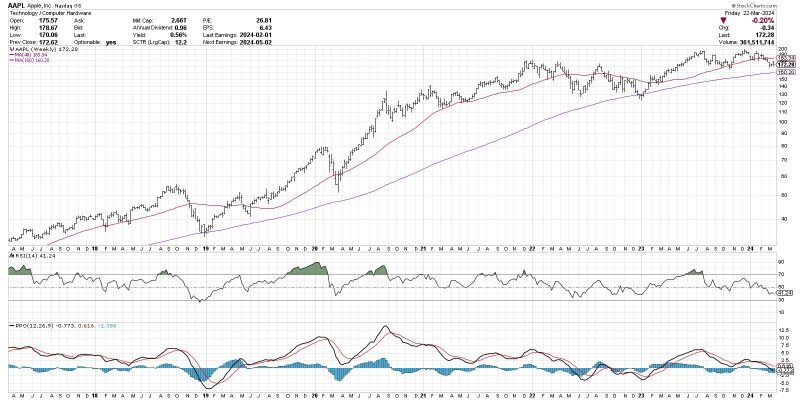In evaluating the potential downside risks for Apple Inc., it is essential to consider various factors that could impact the company’s performance and share price in the future. While Apple has been a dominant player in the tech industry, boasting a loyal customer base and strong brand recognition, there are several bearish arguments that investors should take into account.
One prominent concern is related to Apple’s heavy reliance on the iPhone for a significant portion of its revenue. The iPhone has historically been Apple’s flagship product and primary revenue driver. However, in recent years, the smartphone market has become increasingly saturated, with intense competition from other tech giants such as Samsung and Huawei. As a result, Apple faces challenges in maintaining its market share and sustaining iPhone sales growth.
Furthermore, the slowdown in global smartphone demand poses a significant threat to Apple’s financial performance. Economic uncertainties, changing consumer preferences, and longer upgrade cycles have all contributed to weakening demand for smartphones worldwide. If this trend continues, Apple could face declining sales and profitability, leading to downwards pressure on its stock price.
Another key consideration is the ongoing trade tensions between the United States and China. As Apple manufactures a significant portion of its products in China and relies on the country as a key market for sales, any escalation in trade disputes could have adverse effects on the company. Tariffs, export restrictions, or geopolitical risks could disrupt Apple’s global supply chain and erode its profit margins.
Moreover, the tech industry is characterized by rapid technological advancements and disruptive innovation. Apple’s ability to innovate and introduce new products that capture consumers’ interest is crucial for its long-term success. However, critics argue that Apple’s recent product launches, such as the iPhone 11 and AirPods Pro, have not been revolutionary enough to differentiate the company from its competitors. Without groundbreaking innovations, Apple could struggle to maintain its competitive edge and drive future growth.
In addition to these external challenges, internal factors within Apple should also be considered. The departure of key executives, such as Chief Design Officer Jony Ive, raises concerns about the company’s leadership and creative direction. Furthermore, issues related to product quality, privacy concerns, and ecosystem lock-in could tarnish Apple’s reputation and customer trust over time.
In conclusion, while Apple remains a formidable player in the tech industry with a strong track record of innovation and success, investors should be mindful of the potential risks and uncertainties facing the company. By assessing both external market dynamics and internal operational challenges, investors can make informed decisions about the future prospects of Apple and adjust their investment strategies accordingly.
